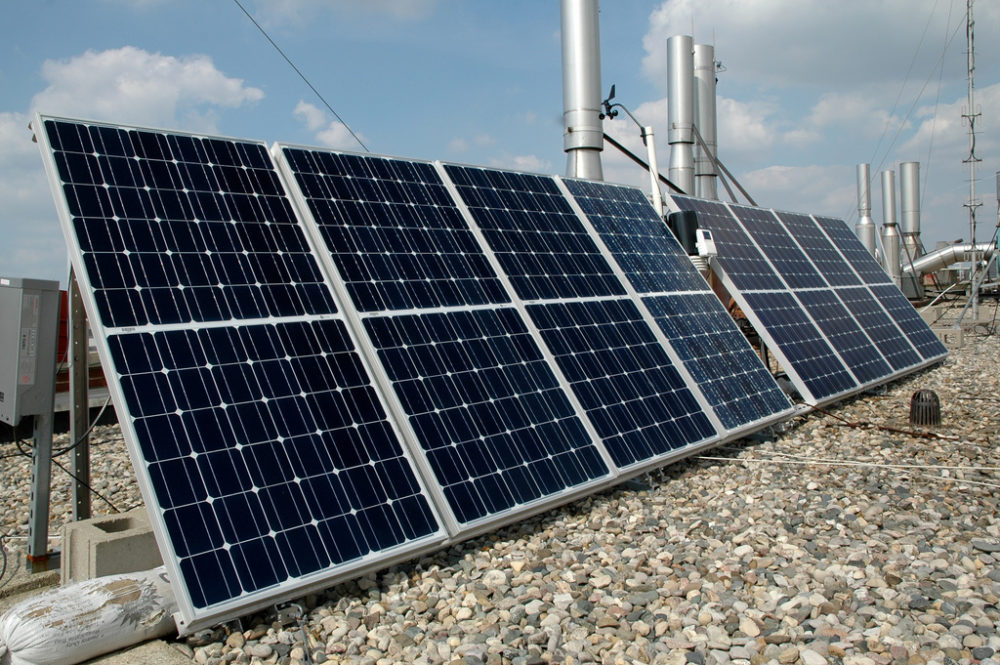Solar advocates cheered an order approved Tuesday by the
Illinois Commerce Commission that defines crucial aspects of how the state will
meet its ambitious goals for exponentially increasing solar capacity under
the Future
Energy Jobs Act.
On three different key points, the commission changed a
proposed order from an administrative law judge in ways that solar advocates
and consumer groups had recommended. If the proposed order had been implemented
unchanged, advocates had feared that many rural and lower-income residents
would have been excluded from solar incentives, and that the state might rely
too heavily on renewable energy credits from out-of-state and existing projects
as opposed to new in-state construction.
Now, major groups that helped draft the sweeping energy law
say they are very confident that the goals laid out in the law will be met,
including provisions for extensive distributed solar in rural and
economically-distressed areas.
“This has been a long time coming, we’re thrilled with this
step,” said Brad Klein, staff attorney for the Environmental
Law & Policy Center. “It’s delivering on the promise of the new
modernized renewable energy standard passed by the legislature. It’s going to
put Illinois on the map as a real leader in the nation on new solar
development, particularly as the market is softening in some places. And
everyone will be able to benefit.”
Changes applauded
The Illinois
Power Agency (IPA), which procures energy for the state’s utilities ComEd
and Ameren, will oversee the purchase of renewable energy and the sale of solar
renewable energy credits (SRECs) as outlined by the law. ComEd had argued that
municipal utility and cooperative customers shouldn’t be able to sell SRECs
from their solar projects since they don’t pay into the state’s renewable
energy fund, which finances the SRECs. The judge’s proposed order banned
muni and coop customers from the SREC program.
But the final order allows them to participate, much to the
relief of customers and solar developers who already had projects in the works
in those territories.
The final order also eliminated proposed spot procurements
for renewable energy credits that had been scheduled to occur twice in 2018 and
once in 2019. Clean energy groups worried that spending on those procurements –
for RECs from existing, possibly out-of-state projects – would deplete the
renewable energy fund that they hope will jumpstart in-state renewable energy
development through long-term contracts.
Christie Hicks, manager of clean energy regulatory
implementation for the Environmental Defense
Fund, noted that the agency might have found spot procurements attractive
to meet renewable energy benchmarks in the next few years. But the law allows
for prioritizing long-term contracts if budget constraints are an issue.
“Even if there are not enough long-term projects in the
first couple years, we know there will be [eventually], we just need time to
get them built,” Hicks said. “The legislation was written with the
understanding it would take some time…meeting long-term goals takes priority
over meeting annual goals.”
The order also made more stringent the requirements that
out-of-state projects have to meet to qualify for incentivized contracts under
the energy law. A point system was devised to evaluate how much public benefit
projects in other states would provide to Illinois residents, including in
clean air impacts. The final order requires a higher number of points than the
proposed order did for out-of-state projects to be considered.
“We think it strikes the right balance of encouraging
building in Illinois and allowing projects outside Illinois to develop,” said
Toba Pearlman, staff attorney for the Natural
Resources Defense Council’s Midwest Region Climate and Clean Energy
Program.
Equal solar access
A major aim of the law, and a priority of the stakeholders
who helped shape it, is to make sure that people from all walks of life have
the chance to participate in developing solar energy. The proposal to exclude
municipal and cooperative customers from solar incentives had been a blow to
this concept since many of those customers are in lower-income, rural areas of
the state.
A focus on community solar is another way the law aims to
make solar accessible to a wide range of residents. Advocates have worried that
developers of community solar projects would prioritize the recruitment of
larger subscribers – like businesses, institutions, or wealthier individuals –
as a more cost-effective way to build projects than through smaller subscribers
with less money to spend.
Klein said he’s hopeful that the provisions of the law and
the commission’s order mean smaller subscribers will have ample chance to buy
into community solar projects.
“We think this order clearly expresses the commission’s
expectation that these programs will provide that kind of clear opportunity and
robust participation from those small customers,” Klein said. “We think the IPA
should keep a close eye on this and be willing to make changes and tweaks and
manage this program to make sure that really happens.”
Revisions that could be made, he said, include higher SREC
prices paid to community solar projects with smaller subscribers.
Stakeholders will also be paying close attention to how the
solar adjustable block program unfolds. That is the mechanism whereby the power
agency sets the price of SRECs meant to incentivize the development of
distributed solar. Different blocks of SRECs will be offered at different
prices, with the price likely ratcheting down over time.
“There are issues around how that adjustable block program
transition will occur, between the blocks and between prices, if there is a lot
more interest [than expected] in the program up front,” said Klein.
“It’s
another case where the IPA will have to carefully manage this program and make
adjustments if necessary. There’s a ton of interest in the community solar
program and a lot of solar companies are trying to acquire land and develop
projects. That will cause some growing pains. It’s a good problem to have, and
there are lessons to learn to accommodate that growth and make sure it’s
sustainable for the long term.”


No comments:
Post a Comment